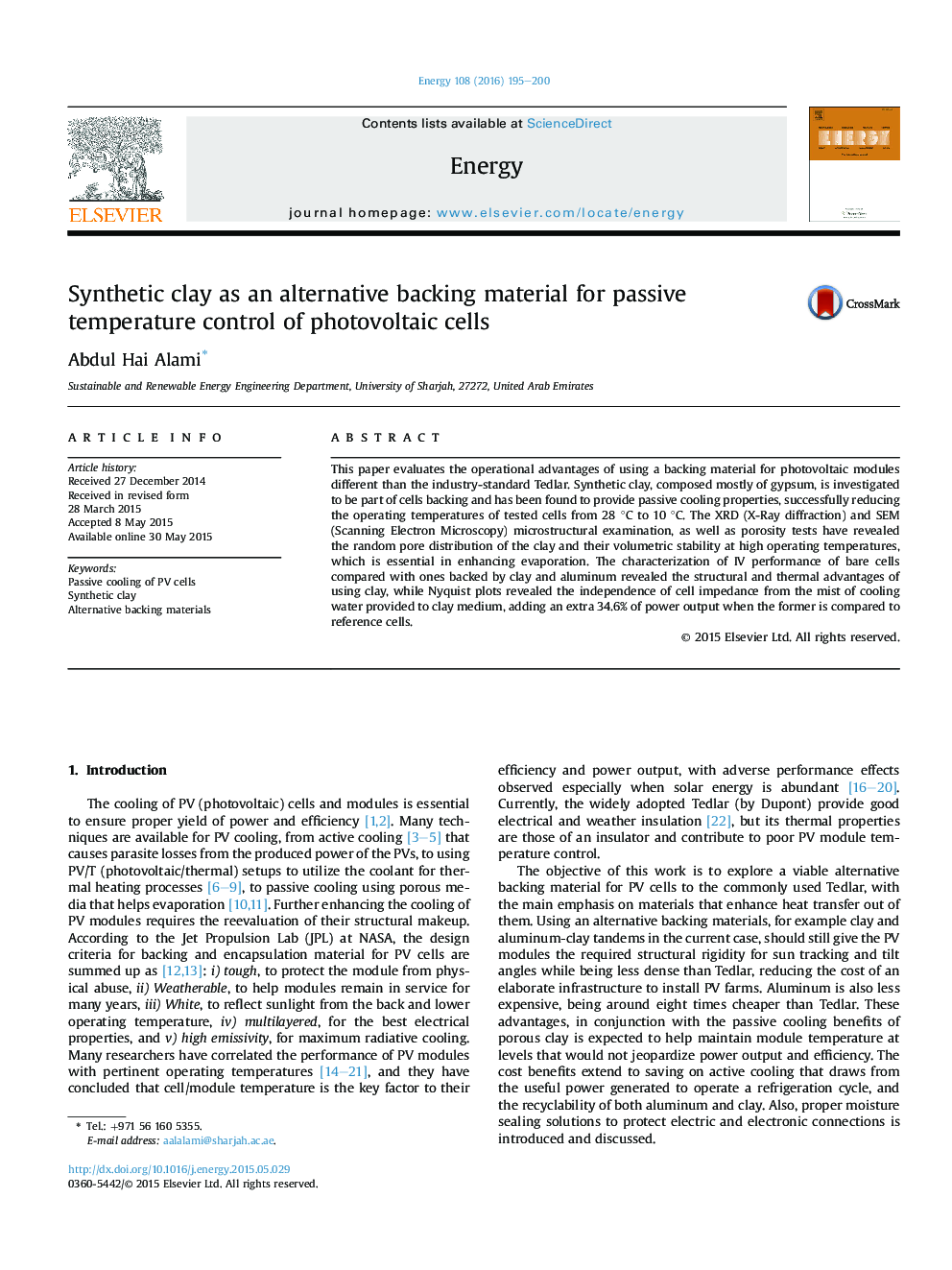| Article ID | Journal | Published Year | Pages | File Type |
|---|---|---|---|---|
| 1730914 | Energy | 2016 | 6 Pages |
Abstract
This paper evaluates the operational advantages of using a backing material for photovoltaic modules different than the industry-standard Tedlar. Synthetic clay, composed mostly of gypsum, is investigated to be part of cells backing and has been found to provide passive cooling properties, successfully reducing the operating temperatures of tested cells from 28 °C to 10 °C. The XRD (X-Ray diffraction) and SEM (Scanning Electron Microscopy) microstructural examination, as well as porosity tests have revealed the random pore distribution of the clay and their volumetric stability at high operating temperatures, which is essential in enhancing evaporation. The characterization of IV performance of bare cells compared with ones backed by clay and aluminum revealed the structural and thermal advantages of using clay, while Nyquist plots revealed the independence of cell impedance from the mist of cooling water provided to clay medium, adding an extra 34.6% of power output when the former is compared to reference cells.
Keywords
Related Topics
Physical Sciences and Engineering
Energy
Energy (General)
Authors
Abdul Hai Alami,
